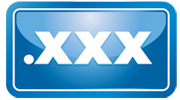I read a press release from Sedo today about the company’s recently launched Internet Domain Name Index (IDNX), and I disagree with one of the observations that was made.
According to the press release:
“The bigger the better. The .com extension, which targets the entire world, has outperformed regional champions. Even successful country-code Top Level Domains (ccTLDs) like .co.uk and .de have not kept pace with .com since 2008. This casts some doubt on the viability of new regional TLDs that have been proposed, such as .nyc (for New York City).“
My issue is that I don’t think a new gTLD, especially regional gTLDs like .NYC or .PARIS, will need to keep pace with .com to be viable. I happen to think that with a local marketing campaign, awareness efforts, and some development by local businesses, people in New York City will know about .NYC, and local businesses will purchase .NYC domain names.
As a result of these efforts, the gTLDs will be purchased locally, and while they certainly won’t sell at the same pace of .com, they will sell. From my perspective, they don’t have to sell nearly at the same clip as .com to be considered successful, let alone viable. With the right price structure and smart management, many niche gTLDs can be not only viable, but also profitable.
Antony Van Couvering is CEO at Top Level Domain Holdings, the company that operates gTLD consulting firm, Minds & Machines, and he is also CEO of dotNYC, a group that hopes to win the rights to manage .NYC. I reached out to Antony Van Couvering for his feedback on the viability of niche gTLDs in light of the press release.
“Sedo makes some good points, about management, about “me-too” not working, and so on. Conceptually, though, it’s hard for people to escape the .com model in measuring success — that measure being naked volume of names under management. Obviously .com is successful, and its enormous volume makes it so, and I agree with Sedo that it will be along time, if ever, before it is surpassed on that score. But to say that “this casts some doubt on the viability of new regional TLDs” is like saying that Apple can never succeed because Microsoft is so entrenched, or that Armani is doomed because Wal-Mart is so big.
The point is often made that that not all success is monetary, and .cat and other “public service” TLDs are brought into evidence. Even from a financial point of view, however, a small TLD can do very well. If .CPA is sold to certified public accountants at $200/yr, it doesn’t take many to join before that’s a great business, especially with a better cost structure than incumbent registries have.
In the United States, .com is habitual (which is not the case in the rest of the world). New gTLDs in general will break that habit, because people will begin to ask themselves, “what’s the extension.” Once that happens, people will begin to examine the extension on its merits, instead of just relying on .com as a universal. Once any one of these new gTLDs, because of great marketing, a compelling bundled application, or some method, challenges the “habit” of Americans to just type .com after a name, the game is wide open, and people will begin to look at the meaning and use of .com instead of just its ubiquity.“
I welcome your thoughts on this topic.



 Today is a big day for the
Today is a big day for the